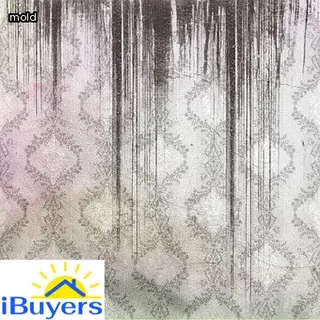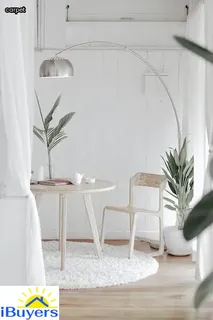Mold is a common problem found in many homes. It can be difficult to recognize and mitigate, but it is important to do so as soon as possible.
Mold can cause health problems, damage to the home structure, and financial strain on the homeowner. It thrives in moist environments and often grows in bathrooms, kitchens, basements, attics and other areas of the home where there is little ventilation or high levels of humidity present.
Recognizing mold requires careful inspection of corners, ceilings and walls for signs such as discoloration or musty odors. If mold has been found in the home, it is important to act quickly.
Mitigation can involve removing any water sources that may be feeding the mold growth and using dehumidifiers to reduce moisture levels in damp rooms. Additionally, surfaces containing mold should be thoroughly cleaned with detergents or bleach solutions.
Finally, if necessary, hiring a professional mold remediation company may be necessary to ensure that all issues are resolved safely and completely.

Mold is a common problem in homes and can be caused by humidity, improper ventilation, and leaks. It is important to understand the different types of molds that grow in homes so it can be identified and treated appropriately.
There are three main types of molds: allergenic, pathogenic, and toxigenic. Allergenic molds cause allergic reactions such as sneezing, coughing, runny nose, and irritated eyes.
Pathogenic molds can cause infections in people with weakened immune systems while toxigenic molds produce toxins that may lead to serious health problems. Other types of mold include saprophytic which feeds on dead organic matter, opportunistic which grows when conditions are favorable, and endophytic which lives inside plants.
Identifying the type of mold present can help determine the best course of action for treating the problem. Regularly inspecting your home for signs of mold growth is important to prevent further issues from arising.
Mold is a type of fungus that can thrive in damp, humid environments and cause various health problems. If left unchecked, mold can spread quickly, causing significant damage to homes and buildings.
In order to recognize and mitigate mold problems in houses, it is important to understand the characteristics of mold growth. Mold is often found in basements, attics, bathrooms, kitchens, and other areas where water or moisture accumulates.
It thrives in temperatures between 40-100 degrees Fahrenheit with relative humidity levels greater than 55%. Mold reproduces by releasing tiny spores into the air which can travel through vents or windows and settle on surfaces like walls or ceilings where they can grow if conditions are right.
To prevent mold growth in homes it is important to keep these areas dry by using proper ventilation techniques such as dehumidifiers or fans as well as regular maintenance of plumbing fixtures and appliances to avoid water leaks. Additionally, regularly inspecting for signs of mold such as musty odors or discoloration on walls should be done to identify any potential problems before they become too serious.

Humidity levels can be a major factor when it comes to mold growth in the home. The ideal humidity level for avoiding mold growth is between 30 and 50 percent.
Generally, if the relative humidity of the air is higher than 50 percent, condensation occurs on surfaces such as windows and walls, causing moisture to form and create an ideal environment for mold growth. To recognize high humidity levels in the home, one should pay particular attention to areas with poor ventilation such as bathrooms and basements.
If these areas are damp or musty smelling, it could be an indication that there is too much moisture in the air. To mitigate this problem, there are several steps one can take such as using a dehumidifier or increasing ventilation by opening windows and using fans.
Additionally, regularly checking areas prone to mold such as bathrooms and basements can help identify any potential problems before they become severe.
Mold can be a serious problem in the home, and it’s important to recognize the entry points of mold before it grows out of control. The most common entry points for mold are areas that are exposed to moisture and water, such as windows, doors, HVAC systems, bathrooms and kitchens.
In addition, any area where condensation can occur is at risk of becoming a breeding ground for mold. The key to mitigating any potential mold problems is ensuring that these areas remain dry and free from moisture.
Regularly inspecting around windows, doors and other wet areas can help identify possible issues before they become a bigger problem. Keeping an eye on the humidity levels in your home is also important; reducing them where possible helps prevent excess moisture in the air which can lead to mold growth.
Lastly, repairing any potential water leaks or damage quickly can help keep things dry and reduce the risk of mold accumulation.

Mold problems can often remain unseen, hidden in areas of the home that are not regularly seen or checked. Sources of mold infestation can be found in places such as air ducts, behind walls, under carpets, and around windows and doors.
These types of mold may go unnoticed until the problem has grown to a large size. The best way to recognize and mitigate any unseen sources of mold is to have an expert inspect your home for potential areas where mold might grow.
A professional can help identify the source of the issue and recommend ways to prevent future growth and contamination. Additionally, good housekeeping habits such as regular dusting and vacuuming can reduce the number of places where mold might grow undetected.
By being vigilant about inspection and taking preventive measures against mold infestation, homeowners can minimize their chances of facing a major problem with an unseen source of mold growth in their homes.
Mold can have a detrimental effect on human health, often without being noticed at first. Common symptoms of mold exposure include sneezing, coughing, watery eyes, itchy throat and skin irritation.
In more serious cases, people may experience difficulty breathing and severe respiratory illnesses such as asthma. Long-term exposure to mold can cause permanent damage to the lungs, leading to chronic health issues such as bronchitis and other infections.
It is important to recognize the signs of potential mold growth in your home and take measures to mitigate the problem before it becomes a health hazard.

It is important to be aware of the risks associated with mold problems in houses, and proactively prevent them from occurring. To effectively reduce moisture and mold growth, you should ensure that your home’s humidity levels are properly regulated, as high humidity creates a conducive environment for mold growth.
This can be done by using dehumidifiers or air conditioning systems to keep indoor humidity levels below 60%. Additionally, it is important to identify any potential sources of water damage or leaks inside the house such as leaking roofs, pipes, or walls and fix them quickly.
Ventilating areas prone to moisture accumulation will also help control excess moisture. Finally, regular cleaning and maintenance of HVAC systems can help reduce condensation and therefore lower the chances of mold growth.
Taking these proactive steps will help you recognize and mitigate any potential mold problems in your home before they become a major issue.
Proper ventilation is essential for reducing moisture levels in the home and preventing the growth of mold. Without sufficient airflow, mold spores can easily become airborne, leading to health risks for residents.
Homes should have adequate air circulation in order to help keep dust and other particles from settling on surfaces. In addition, it is important to ensure that rooms with high humidity levels such as bathrooms, kitchens and laundry rooms are equipped with exhaust fans or other ventilation systems that remove moist air from the space.
It is also important to address areas of water infiltration or damage promptly, as these can create ideal conditions for mold growth if not mitigated quickly. Regularly inspecting high-humidity locations in the home and regularly cleaning surfaces with a damp cloth can also help reduce the risk of mold growth.

Troubleshooting common household mold issues can be a difficult task, as it often requires extensive knowledge of the cause and symptoms of mold growth. The first step to recognizing and mitigating mold problems in houses is to understand the signs that indicate potential mold growth.
Visible discoloration and musty smells are some of the most obvious signs that could indicate a mold problem in your home. Additionally, look for any damp areas on walls, floors, or ceilings.
If you find any suspicious areas, it is important to take further steps to identify whether or not there is actually a problem with mold in your house. Testing kits are available that allow you to test for the presence of mold.
However, if you have serious suspicions about a possible mold problem, it may be best to contact an expert for professional assistance. Once you have identified the source and extent of the problem, it is time to take action.
You will need to address whatever caused the moisture issue that led to the development of mold in order to prevent further growth, which may require repairs or renovations within your home. Additionally, depending on the severity of your situation, you may need professional help from a qualified specialist who can properly remove and remediate any existing mold infestations through specialized cleaning procedures.
To tell if there is a hidden moisture problem in your home, you should look for signs such as discoloration on walls and ceilings, peeling paint or wallpaper, musty odors, and visible mold growth. These are all common indicators that moisture is present in the house and can cause mold problems.
To further check for hidden moisture, you can use an infrared camera to detect water behind walls or under floorboards. Additionally, you can use a humidity meter to measure the relative humidity level of any room in the house; a high number may suggest that excess moisture is present in the air.
Lastly, you can also hire a professional to inspect your home and test for mold if you suspect a problem. Recognizing and mitigating any potential issues early on is key to avoiding costly repairs in the future.

Mold growth in the home can be a serious problem that can lead to health issues and costly repairs. To protect yourself and your family, it is important to recognize common warning signs of mold exposure, such as musty odors and visible mold growth.
Additionally, there are steps you can take to mitigate the risk of developing a mold problem in your house. Start by controlling indoor humidity levels, as high humidity encourages mold contamination.
Inspecting areas where water may collect or leak regularly for signs of moisture or mold will help catch any potential problems early on. Furthermore, using a dehumidifier in areas with high humidity levels can dramatically reduce the risk of mold growth.
Finally, make sure to repair any plumbing issues quickly and thoroughly to prevent excess moisture from accumulating in the home. Taking these steps will help protect your family from potential health risks associated with mold exposure and keep your home safe from unnecessary damage.
When dealing with mold, it is essential to choose the right cleaners for the job. To ensure safety and effectiveness, it is important to understand the type of surface that has visible mold.
Different cleaning agents work better on surfaces like wood, drywall, concrete, tile, and glass. For example, bleach-based cleaners are best for tile and nonporous surfaces such as glass or countertops.
On wood surfaces, use detergents specifically designed to penetrate and remove the mold spores. For drywall and other porous surfaces, a mixture of detergent and water is recommended.
It is also important to make sure that all areas affected by mold are completely cleaned so as not to spread contamination elsewhere in the house. In addition to using proper cleaning agents, wearing protective gear such as gloves and masks is highly recommended when dealing with any type of mold problem.

When it comes to cleaning mold in a house, disinfectants and biocides are necessary tools for the job. It is important to choose a product that is suitable for the type of surface being treated, as not all products will work the same on all surfaces.
The chosen product should also be safe for people and pets. For example, bleach-based cleaners can effectively kill mold but they can also damage surfaces if used improperly or left on too long.
Biocides are also effective at killing mold, however they have a longer lasting effect and can potentially affect air quality if not used properly. After choosing a suitable product for your situation, it is important to take steps for proper application such as wearing protective gear like rubber gloves, goggles, and masks to protect from any potential exposure.
Finally, it is essential to clean up the affected area thoroughly after application of the disinfectant or biocide, as any remaining residue could lead to further health issues down the line.
When tackling a mold problem in your home, it is essential to protect yourself and the people living in the house by wearing protective gear. This includes long sleeves, pants, gloves, and a face mask.
Long sleeves and pants help protect your skin from contact with any mold spores that may be present. Gloves should be wear when touching any surfaces that may be potentially contaminated with mold.
A face mask is important to wear as it will prevent you from breathing in any airborne mold particles that might exist in the area. When cleaning moldy surfaces, always make sure to wear the proper protective gear and discard it afterwards for safety reasons.

When dealing with toxic or allergenic molds in houses, it is essential to take the necessary steps to recognize and mitigate the problem as soon as possible. A few best practices to keep in mind include properly identifying mold types, controlling moisture levels, sealing off contaminated areas, and regularly inspecting for new growth.
It is important to be aware that some mold species can be hazardous and can cause allergic reactions or other health issues when inhaled. Therefore, it is smart to use protective gear when working with these molds.
If a person has existing allergies or sensitivities they should take extra precaution by wearing an N-95 rated respirator mask while in contact with affected areas. Additionally, it is recommended to contact a professional if the mold issue is too complicated or extensive for an individual to manage on their own.
Taking these steps will help ensure that any mold problems in your house are handled safely and effectively with minimal risk of exposure for yourself and others living in the home.
Testing the quality of air in a home after a mold remediation process is completed is an essential part of the overall process. Poor air quality can cause health problems and even exacerbate existing problems, so it is important to make sure the entire area is safe before allowing people to move back in.
To determine the quality of air in a home, professionals will use specialized testing equipment to measure for mold spores, airborne particulate matter, and other contaminants. This will help them determine if any additional work needs to be done or if the area is safe enough to move back into.
It is also important to make sure that any excess moisture has been completely removed from the area as this can lead to future mold growth. Proper ventilation should also be maintained in order to keep the space dry and reduce any potential for future problems.
Finally, regular inspections should be conducted by professionals to ensure that no new mold growth has occurred or any other issues have arisen since the initial inspection was performed.

Once a mold problem has been identified and all necessary steps have been taken to remove, treat and prevent the mold from growing again, it can be difficult to know when the cleanup is complete. To make sure that the mold issue has been fully resolved, homeowners should check for lingering odors, inspect walls and floors for visible signs of growth, and run tests to determine if any mold spores remain in the air.
If there are still traces of mold after cleaning, it's important to take additional steps to fully eradicate it. This could include using HEPA vacuums or antimicrobial sprays.
Homeowners should also use a moisture meter to ensure that humidity levels remain within healthy ranges to prevent new growth from occurring. Regularly scheduled inspections by certified professionals can help keep mold in check as well.
Taking these proactive measures will help ensure that once mold is gone, it stays gone for good.
Mold can cause a variety of sicknesses in humans, ranging from mild allergies and irritation to more serious conditions such as respiratory infections and asthma. It is important to know the signs of mold sickness so that you can properly recognize and mitigate any potential problems in your home.
Common symptoms of mold sickness include coughing, wheezing, watery eyes, sneezing, skin rashes or irritations, headaches, fatigue or difficulty concentrating. If you experience any of these symptoms when in your home, it could be a sign that you have a mold problem.
To eliminate the possibility of health problems caused by mold exposure, it is important to inspect your home for visible signs of moisture and dampness. Additionally, if you smell musty odors or notice discoloration on walls or ceilings in your home, it could be an indication that there is a mold issue present.
Taking action quickly to identify and remediate any existing mold issues can help protect your family’s health by reducing their chances of developing illnesses associated with mold exposure.

Mold is an issue that must be taken seriously, as it can cause serious health problems for those living in a house with mold. It is important to know how to recognize and mitigate mold problems in houses.
One of the first steps is to look for visible signs of mold, such as black or green spots on walls and ceilings, water stains or discoloration, musty odors, peeling paint or wallpaper, or condensation on windows. If any of these signs are present, it is essential to take action immediately.
Professional mold remediation may be needed in order to completely remove all traces of mold from the home and ensure the safety of its occupants. However, if you have identified and mitigated a minor problem early on, there are some DIY solutions you can try.
Start by reducing humidity levels in your home; this can be done by using exhaust fans in bathrooms and kitchens, avoiding excess moisture when cleaning, and directing water away from the foundation outside your home. Additionally, use dehumidifiers to help reduce indoor moisture levels and keep air vents clean so they can properly circulate air throughout the house.
Even after taking these preventative measures it is still important to regularly inspect your home for any signs of new or existing mold growths. By recognizing potential issues early on and taking appropriate action to mitigate them quickly you can help keep your home safe and healthy for all who inhabit it.
Mold in the home can cause a variety of symptoms that can affect the health and wellbeing of those living there.
Common signs of mold in a house include: musty smells, visible patchy or slimy growths, water stains or discoloration on walls and ceilings, respiratory issues such as coughing, sneezing, wheezing and itchy eyes.
If your home has experienced any past water damage from flooding, leaks or other sources this can be an indicator that mold may be present.
It is important to be aware of these signs of mold so you can recognize them quickly and take steps to mitigate the problem before it gets worse.
Mold infestations can be a major problem in homes, leading to potential health risks and costly repairs. Fortunately, there are steps you can take to recognize and mitigate mold problems in your house.
First, inspect your home for signs of mold growth, such as discoloration on walls or ceilings, musty odors, and visible mold spores. If you find signs of mold growth, it's important to act quickly.
You should start by identifying the source of the moisture that is causing the mold to grow. Common sources include plumbing leaks and condensation from humidifiers or air conditioners.
Once you have identified the source of moisture, you need to fix it immediately and dry out any affected areas with fans or dehumidifiers. Additionally, removing any porous materials such as carpets or drywall that may have been affected by the mold can help prevent further contamination.
Finally, cleaning up any visible surfaces with an appropriate detergent can help keep the mold levels under control. By following these steps, you can effectively fix a mold infestation in your house and protect yourself from potential health risks associated with exposure to mold spores.